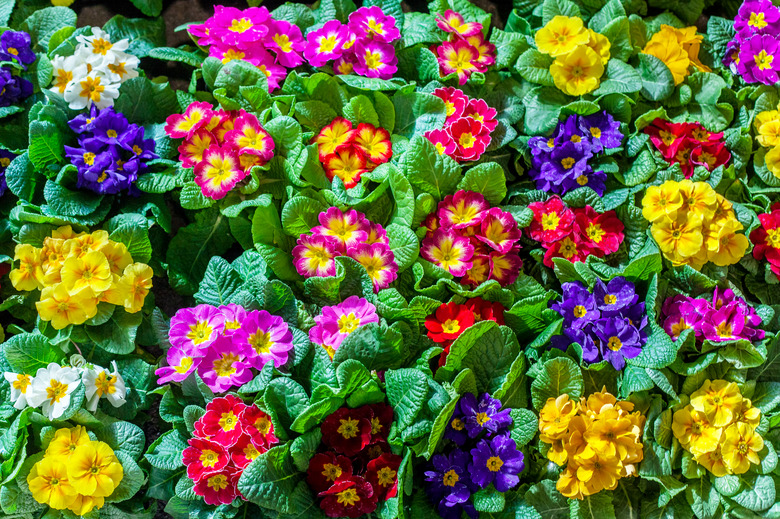How To Deadhead Primroses
We may receive a commission on purchases made from links.
Primroses (Primula polyanthus), an old-fashioned perennial popular in gardens for hundreds of years, is native to the Northern Hemisphere. Most primroses are hardy in U.S. Department of Agriculture plant hardiness zones 3 to 8. Over 400 species of the rosette-like plant grow, both in the wild and cultivated in proper gardens, and one of the tricks gardeners learn early is that their primrose bed will last much longer if the plants are properly deadheaded.
What Is Deadheading?
What Is Deadheading?
Deadheading simply means grooming the plant. By removing the spent flowers, you prevent your plant from going to seed and allow it to mature. Cutting back the spent flower stems also encourages new growth, so you'll see fresh flowers. Once your plants have started to thrive, a simple walk around the garden several times a week allows you to see how your primroses are progressing and whether you might need to clean up the flowers that are spent.
Things Needed
How to Deadhead Primroses
1. Prepare Your Pruning Tools
Sterilize your scissors or pruning shears with rubbing alcohol before using them to deadhead your primroses. Some gardeners prefer to simply pinch away the spent flowers between thumb and forefinger, but sharp pruning tools make it easier to snip away the dead flower and leaves.
2. Protect Your Hands
Wear rubber gloves if you have sensitive skin. Some people are allergic to certain varieties of plants. It also curbs the spread of disease if your naturally oily fingers are protected. Certain floral diseases easily spread when fingers flit from one flower to another.
3. Remove the Old Flowers
Look for the flowers that have begun to fade or are drying out. Reach down to the base of the flower stalk and hold the dead flower gently. Bend the flower to expose the stem, and pinch or snip the dead flower away from the plant. Carry a small bag or wear an apron to hold the dead flowers instead of dropping them on the ground.
4. Check for Bad Leaves
Check your primroses occasionally and clip off any yellow or rotten lower leaves you see around the base of the plant to promote new growth. Your primrose bed might seem a bit droopy after you deadhead and trim old growth, but you'll be rewarded with new buds.
Tips for Growing Primroses
Tips for Growing Primroses
You can grow primroses from seed or purchase your plants from a grower. If you choose to grow them from seed, be aware that the seeds are exceptionally small and it's difficult for the novice gardener to be successful in starting these plants from seed.
Most primula varieties flower reliably and are easy to grow. Plant them in sun or partial shade, and choose an area or pot that provides good drainage. The best soil is gritty and humus-rich. Primroses don't like to be wet, so avoid overwatering them. If primroses get too wet, they can develop conditions like crown or root rot and become susceptible to garden bugs, like aphids or spiders.
If you can shelter your primroses, you'll have very happy plants. Offering your plants liquid fertilizer every two weeks or so will encourage them to produce fresh buds and create a beautifully flowering plant. Once your plants stop blooming, pull the primroses from the ground or your pots, and put them into containers until fall.
Varieties of Primroses
Varieties of Primroses
Most of the 450+ species of the genus primula like cooler weather and won't tolerate midsummer heat. They come in every color of the rainbow and the species' names span the alphabet.
The varieties are distinguished by their rosette of leaves that resemble the leaves of a head of lettuce. In the center of the rosette are the flowers. Each flower has five petals joined at the base. Flowers appear on leafless stalks. Common colors include white, red, blue, yellow, purple, and cream, but some species also produce bicolored flowers.
